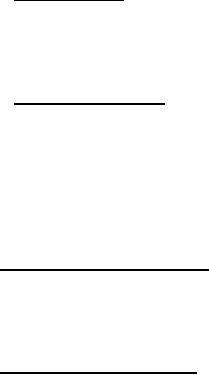 |
|||
|
|
|||
| ||||||||||
|
|  MIL-T-62145E
shall be provided to enable the level of fluid to be observed when the lift body is in its lowered
position. A tank vent shall be installed and shall prevent weather and foreign matter from
entering the reservoir. Provisions shall be made for inspecting and cleaning the reservoir without
loss of fluid in the system. The reservoir shall be protected to prevent damage. The reservoir
shall be provided with a photoetched, corrosion-resistant plate to indicate the type of hydraulic
fluid to be used. The plate shall be installed near the filler cap. When specified (see 3.4.1.8(d)),
the reservoir shall be equipped with a heater.
3.5.6.4.1 Hydraulic fluid. Unless otherwise specified, hydraulic fluid conforming to the
manufacturer's standard or recommended requirements shall be provided in the hydraulic
system. When specified (see 6.2), hydraulic fluid conforming to MIL-H-83282 shall be provided
in the hydraulic system.
3.5.6.4.2 Oil filter and strainer. A full flow type 10-micron discharge oil filter with a
capacity not less than three times the maximum pump operating flow rate shall be provided in
the return line to the reservoir. A 100 mesh suction line strainer with a capacity of not less than
two times the pump flow rate shall be provided in or near the hydraulic reservoir. The return line
oil filter shall be equipped with a condition indicator gage and a 15 psi internal bypass. The gage
shall be so located as to be easily readable with the body in the down position. Both the filter
and the suction strainer shall be accessible for cleaning or for replacement of the filter cartridge.
3.5.6.5 Hydraulic fluid temperatures. The hydraulic fluid temperature shall be maintained
within safe limits to prevent seal damage and faulty operation of hydraulic valves and controls.
Excessive heating of the fluid (more than 55F above ambient in an ambient of 125F) shall not
be acceptable under any operating condition.
3.5.6.6 Hydraulic lines and fittings. Hydraulic lines shall be located to facilitate maximum
ease of removal and installation, visual inspection for failures, and maximum protection from
damage during operation of the body assembly. Flexible hydraulic hose or collector rings shall
be used where flexing of hydraulic lines is encountered and where installation of components
requires a flexible coupling. Standard straight-thread, flared type fittings, adaptions to flared
type fittings, or tapered pipe thread with dry seal fits shall be furnished. Hydraulic lines and
fittings shall be air and liquid tight and shall be installed to prevent vibration and chafing. High
pressure hoses which are located in areas where chafing may occur shall be covered with spiral
type hose guards. The system shall be designed to prevent hydraulic transients. Provisions shall
be made for bleeding air from the hydraulic system and for completely draining all hydraulic
lines, when necessary. A manual type bleeder shall also be provided as on-vehicle equipment on
closed-center systems. Hose assemblies and all seamless steel hydraulic lines shall be adequate
to provide the rate of flow, temperature, and pressures required to operate the system smoothly
and efficiently. Galvanized pipe and copper tubing shall not be acceptable. A pressure gage
27
|
|
Privacy Statement - Press Release - Copyright Information. - Contact Us |